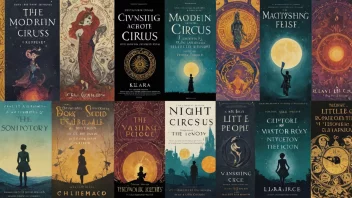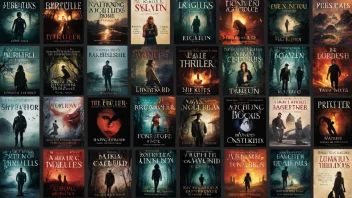Writing a compelling cliffhanger is an art that can elevate a mystery novel from ordinary to extraordinary. A well-executed cliffhanger not only keeps readers on the edge of their seats but also encourages them to turn the pages faster in anticipation of what comes next. Whether you’re a seasoned author or new to the genre, understanding the nuances of crafting these suspenseful moments can make a significant difference in your storytelling. Here are five essential tips for creating cliffhangers that will leave your readers craving more.
1. Build Tension Gradually
The key to a successful cliffhanger is the buildup of tension throughout your narrative. You want your readers to feel invested in the characters and the unfolding mystery. Use foreshadowing, subtle clues, and escalating stakes to create a sense of urgency. For example:
- Introduce a ticking clock: Establish a time limit for your protagonist to solve the mystery.
- Heighten the stakes: Ensure that the consequences of failure are dire, creating a sense of desperation.
- Use red herrings: Lead readers down false paths to heighten suspense.
2. Create Relatable Characters
Your characters should resonate with readers, making them care about the outcome. When readers are emotionally invested in a character’s journey, a cliffhanger becomes more impactful. Consider these approaches:
- Provide backstories: Give characters relatable motivations and histories that make their situations more poignant.
- Show vulnerabilities: Allow characters to experience fear, doubt, and uncertainty, making them feel real.
- Develop relationships: Create bonds between characters that can be threatened, enhancing the tension in cliffhanger moments.
3. Use Timing to Your Advantage
The placement of your cliffhanger is crucial in maintaining momentum. Incorporate cliffhangers at pivotal moments in your narrative to maximize their impact. Here are some timing tips:
- End chapters with a bang: Leave your reader with unanswered questions or shocking revelations at the end of a chapter.
- Mid-chapter surprises: Insert unexpected twists in the middle of a chapter to keep readers guessing.
- Alternate perspectives: Use multiple viewpoints to create suspense, revealing different pieces of information that lead to a cliffhanger.
4. Keep It Concise
Cliffhangers work best when they are brief yet powerful. Avoid over-explaining or dragging out the moment. A concise cliffhanger allows readers to fill in the gaps with their imagination, which can be far more suspenseful. Consider the following:
- Short sentences: Use punchy sentences to create a rapid-fire effect that amplifies tension.
- Limit dialogue: A single impactful line can be more effective than lengthy conversation.
- Focus on action: Highlight key actions or revelations that thrust the reader into the next chapter.
5. Leave Room for Interpretation
A well-crafted cliffhanger often leaves readers with questions that ignite their curiosity. This ambiguity can be a powerful tool, encouraging readers to speculate on the outcome. To achieve this:
- Introduce mysteries: Present new puzzles or dilemmas that are not immediately solvable.
- Subtlety is key: Avoid outright answers; instead, hint at possibilities that could unfold.
- Encourage theories: Foster discussion among readers about what might happen next, creating a community around your novel.
In conclusion, crafting a compelling cliffhanger in a mystery novel is about balancing tension, character relatability, timing, conciseness, and intrigue. By gradually building suspense, creating relatable characters, using timing effectively, keeping your cliffhangers concise, and leaving room for interpretation, you can ensure that your readers will be eagerly turning the pages to discover what happens next. As you write, remember that the goal is to excite, surprise, and engage your audience, turning every chapter into an exhilarating ride through your mystery.






